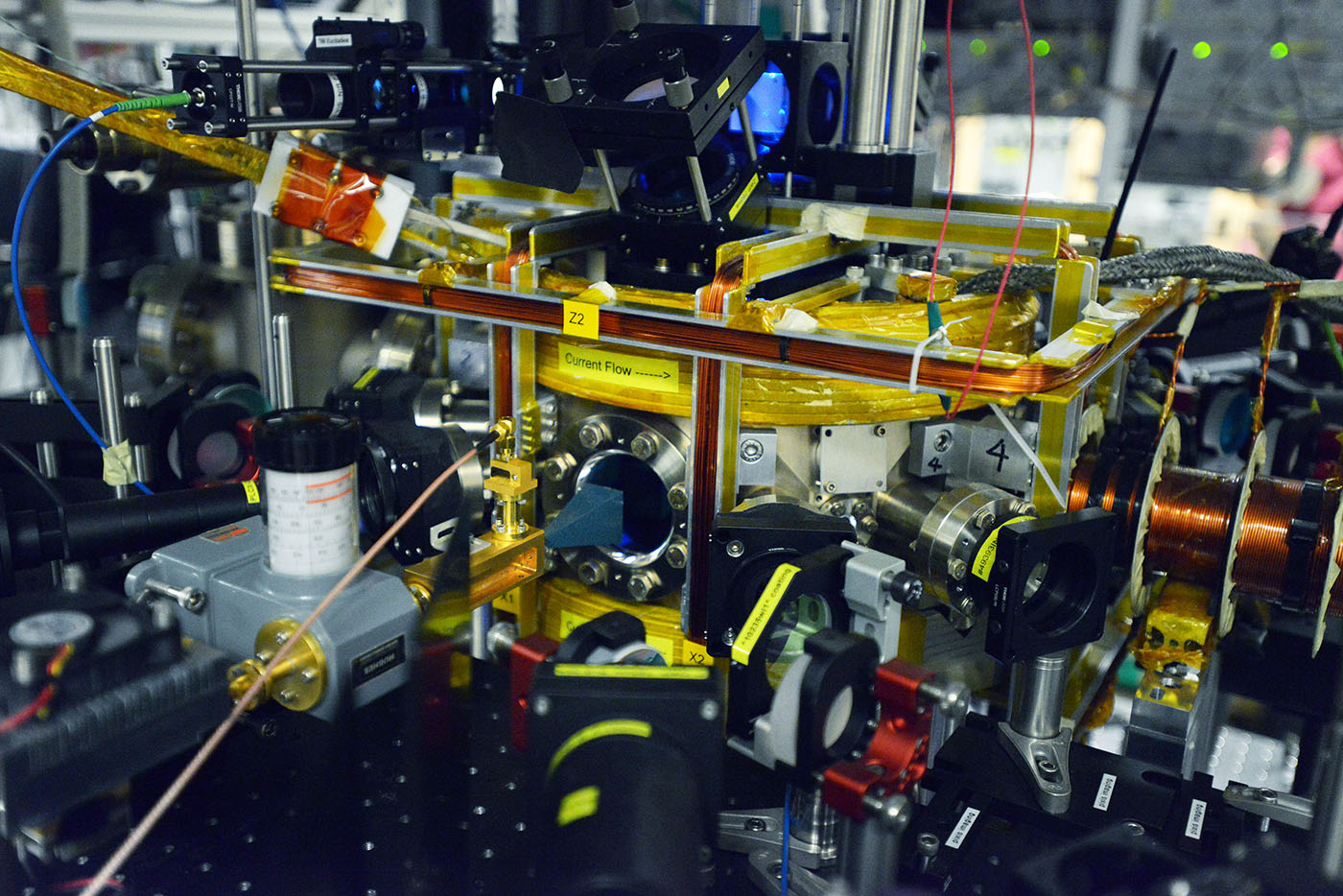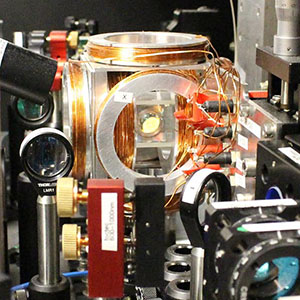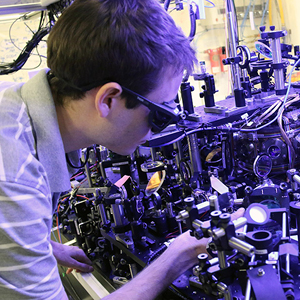Highlights
Highly excited atoms show promise for quantum networks
 CQT’s Wenhui Li (front) and Thibault Vogt (back) at work on their Rydberg atom experiment.
CQT’s Wenhui Li (front) and Thibault Vogt (back) at work on their Rydberg atom experiment.
Future quantum networks may need a technology recently demonstrated in a laboratory at CQT. The method could convert microwave signals used inside quantum computers into optical signals for transmission through optical fibre.
The experimental group of CQT’s Wenhui Li did the work in collaboration with theorists Martin Kiffner, a CQT Senior Research Fellow, and Dieter Jaksch, a CQT Visiting Professor from the University of Oxford in the UK. The team published their results in March in Physical Review Letters.
“Microwave to optical conversion is a very hot topic both for fundamental science and for applied technologies,” says Martin. “A lot of people have started to think about this because it's a key component of the network approach to quantum computing.”
For example, microwaves carry information inside superconducting quantum devices, a leading technology for quantum computing. But microwaves are not well-suited to transfer quantum information over long distance. Converting the microwaves into optical signals could allow superconducting quantum computers to be hooked together with optical fibres, as used in today’s computing networks.
There are existing schemes for microwave-to-optical conversion, but the technique using ‘Rydberg atoms’ offers the advantage of being tunable to work across a range of frequencies and having big bandwidth.
Conversion scheme
A Rydberg atom (named for Johannes Rydberg, a 19th Century Swedish physicist) is an atom of any element in which one electron has been promoted into a highly excited state. As a consequence, the atom gets bigger, which helps it to interact strongly with microwaves.
Martin, Dieter and colleagues in Oxford spotted a way to build on this interaction, getting the atoms to absorb microwave radiation and then emit optical light. They published a paper outlining this proposal in the New Journal of Physics in 2016.
The conversion scheme works through a process known as ‘six-wave mixing’. Four other signals are added to the microwave input, of frequencies carefully chosen to move the atoms’ electrons up and down a ladder of energy levels. The sixth wave is the output of optical light, as an electron jumps from a high to low energy level. Energy is conserved overall.
Broadband and coherent
Inspired by Martin’s proposal, Wenhui’s team worked out an energy level scheme and experimental configuration suitable for their existing apparatus. Graduate student Jingshan Han and postdocs Thibault Vogt and Christian Gross then carried out the first proof-of-principle demonstration of the method.
In the experiments, the team achieved conversion across a range of frequencies 4000kHz wide, centred on the microwave frequency 84GHz. This is much larger than the bandwidth achieved in other conversion methods.
The team also showed that phase information is coherently transferred from microwaves to light during the conversion. This coherence would be required for quantum information processing.
In the Physical Review Letters paper, the team report a photon conversion efficiency of 0.3%. “It was easier than we’d expected to do this demonstration, and we know we can improve the efficiency,” says Thibault. They have already increased the efficiency by a factor of around 20 in the lab (in work not yet published) and are confident of doing better still.
The team’s experiments so far have used cold Rydberg atoms. They have also now built an entirely new setup with Rydberg atoms at room temperature. Next steps could include trying to couple to quantum systems.
“There are many quantum systems and they all work at different energy scales. To build a quantum network, we will probably have to employ several different systems – microwave, terahertz, optical – so this kind of conversion between wavelengths will be generally useful,” says Wenhui.
 A close-up look at the experimental chamber in the lab of CQT’s Wenhui Li in which Rydberg atoms are made and trapped. To the centre-left of the image, you can see a grey microwave horn aimed at a window in the metal chamber. This creates the microwaves converted in this scheme.
A close-up look at the experimental chamber in the lab of CQT’s Wenhui Li in which Rydberg atoms are made and trapped. To the centre-left of the image, you can see a grey microwave horn aimed at a window in the metal chamber. This creates the microwaves converted in this scheme.
Learn more
Related Stories
 | Lens trick doubles odds for quantum interaction October 31 2017 |
 | Creative trapping method simplifies cold atoms experiment June 08 2016 |






